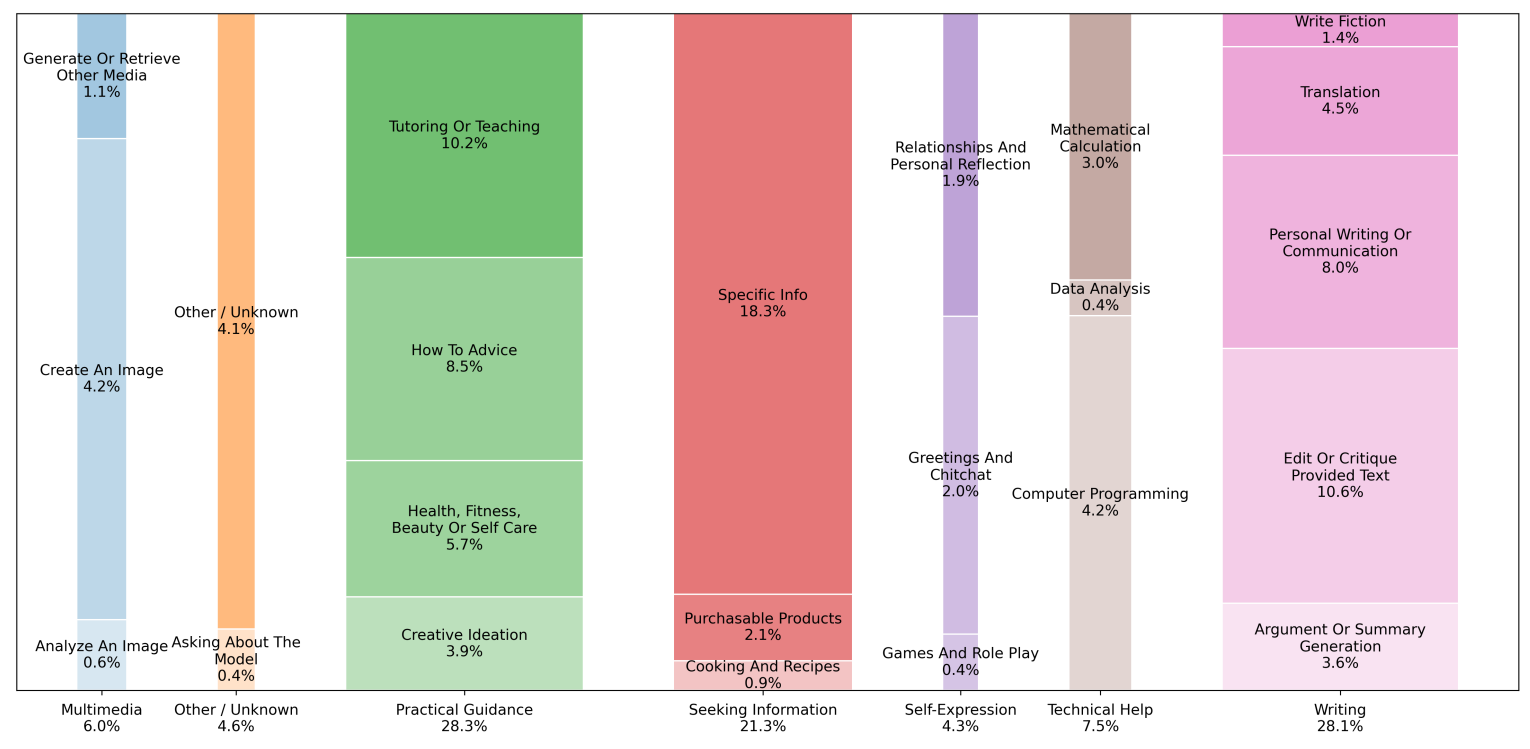A Shift in AI Adoption
A recently whitepaper on "How People Use ChatGPT" was released by NBER. This whitepaper presents an overview of ChatGPT usage trends from late 2022 through July 2025. This analysis reveals continued fast adoption and highlights a significant shift in purpose toward personal, non-work related use.
Additional AI usage details on Medium!Notebook LM Audio and Video Summaries:
13 minute audio summary
5 minute video summary
Explosive Adoption
Weekly active users by July 2025
Shift to Personal Use
of consumer messages are non-work
Indicators of Exponential Scale
The adoption of ChatGPT has been described as "absolutely explosive", changing how analysts think about tech evolution cycles.
Massive User Base
Weekly active users by July 2025
Massive Volume
Weekly results delivered
Sustained Growth
New users every single week
The Shift to Personal Life
The most striking usage pattern defining ChatGPT's scale is a massive pivot away from work-related tasks toward personal, non-work usage.
Non-Work vs. Work Usage (June 2025)
What Are People Using It For?
Three main topics cover almost 80% of all usage, though the balance between them has shifted dramatically.
Practical Guidance
For creative brainstorming and advice.
Seeking Information
As a substitute for search engines.
Writing
As an editorial assistant or co-pilot.
Exponential Scale and Growth
The adoption of ChatGPT has been described as "absolutely explosive," changing how analysts think about tech adoption cycles.
Massive User Base
By July 2025, ChatGPT reached 700 million weekly active users, equivalent to roughly 10% of all adults on the planet.
Message Volume
Users are collectively sending 18 billion messages every single week.
Rapid Acceleration
In the single year between July 2024 and July 2025, the total message volume increased by more than five times.
Sustained Engagement
Growth is driven not just by new users, but by usage growing consistently within every group of existing users.
Global Spread
Usage has been growing relatively faster in low and middle income countries, indicating rapid and accessible spread.
Demographic Convergence
The early gender imbalance has shrunk dramatically, with users of typically masculine names accounting for 48% by June 2025.

The Shift to Personal Life
The most striking usage pattern is the pivot from work-related tasks to personal, non-work usage, creating enormous economic value in "home production."
Non-Work Dominance: June 2024 vs June 2025
Home Production Value
This widespread personal use is categorized as "home production"—useful activities outside of a paid job like planning and learning, creating enormous value.
The Age Factor
This huge 73% non-work figure is primarily driven by the younger demographic (users aged 18 to 25).
Role as a Life Assistant
The data suggests AI's biggest role is as a life streamlining assistant or a personal efficiency tool, optimizing daily life on a massive scale for millions of users.
Core Content and Functionality
Three main topics cover almost 80% of all usage, showcasing how users leverage AI as a utility tool.
Practical Guidance
Held steady
Covers problem solving, creative brainstorming, and how-to advice. Tutoring and teaching are significant, accounting for 10.2% of all messages.
Seeking Information
↑ Jumped from 14%
Grew fast, suggesting a substitute effect where users bypass traditional search engines and ask the AI directly.
Writing
↓ Declined from 36%
While its overall share dropped, it remains high for work use (40%). It functions more as an editorial assistant or co-pilot than a ghostwriter.
Minor Uses
Relatively minor uses that do not define the overall scale include computer programming (4.2% of messages) and emotional support/companionship (1.9%). It is overwhelmingly used as a utility tool focused on cognitive, practical tasks.
Cognitive Enhancement & Decision Support
A critical usage pattern, especially among skilled users, is the shift toward using ChatGPT as a decision support co-pilot ("asking") rather than solely for task execution ("doing").
"Asking" vs. "Doing" Split
The Growth Trend
While "doing" is higher in the work context, the "asking" category has been growing faster over the last year, hitting nearly 52% overall by June 2025.
Value Focus
Interactions in the "asking" advice-seeking mode consistently receive much higher quality ratings (rated good more than four times as often as bad).
High-Value Work Augmentation
Users with graduate degrees and those in high-paying professional jobs are disproportionately more likely to use it for "asking" messages, highlighting its role in high-value cognitive work.